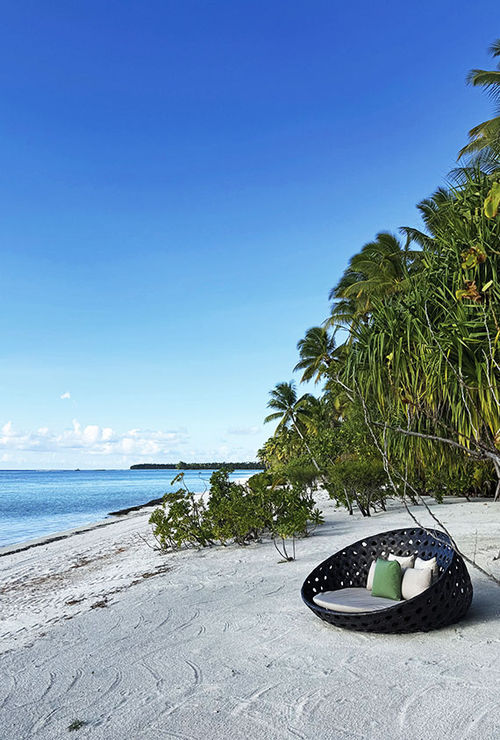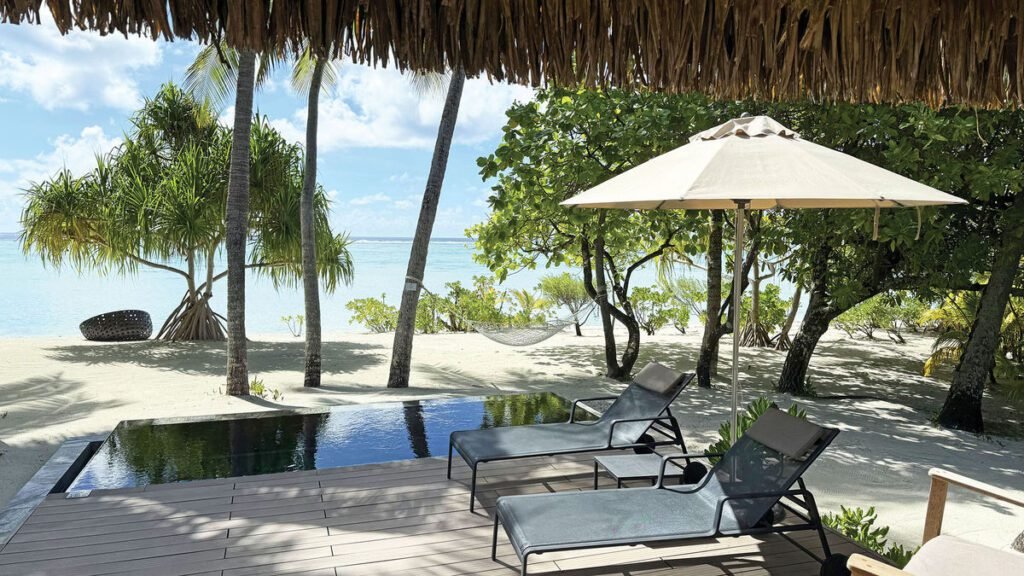The Brando, an exclusive resort on Marlon Brando’s private island in French Polynesia, has established itself over the last decade as a premier sustainable luxury destination. The resort is equipped with a unique ocean-powered air-conditioning system, solar power infrastructure, and an active research center, redefining what it means to experience seclusion without compromising modern comforts.
Richard Bailey, founder of Beachcomber Tahiti, stresses that The Brando should not be labeled as an “ecoresort.” This term often carries misconceptions about sacrificing amenities for sustainability. “People immediately think, ‘What am I going to have to sacrifice? Television? Am I not going to be connected to the internet?’” he explained.
The 35 villas at The Brando are positioned to maximize privacy. Photo Credit: Jeri Clausing
Visitors will find no shortage of luxury at The Brando, with expansive villas featuring private pools and beaches. The resort offers a myriad of activities, including access to a tropical spa, lagoon tours, kayaking, paddleboarding, and even Polynesian cooking lessons.
Sustainability is intertwined with luxury here. The Brando’s initiatives, in collaboration with its nonprofit arm, the Tetiaroa Society, have resulted in not just preservation but actual improvement of the island’s ecosystem. “The island is in better shape today than when we started,” commented Bailey, who also serves as chairman of the Tetiaroa Society.
The bird population has remarkably quadrupled, and the green sea turtle population has skyrocketed from two dozen nests in 2004 to over 500, thanks to years of efforts to eliminate invasive species like rats, which endanger bird and turtle eggs.
A Luxury Retreat with Historical Significance
Located on Tetiaroa, a 2-square-mile atoll once frequented by Tahitian royalty, The Brando is a striking blend of natural beauty and total exclusivity. Originally purchased by Brando in the 1960s, the atoll features no more than a bar and a few huts, but today is a renowned destination for the elite. With its coral reefs creating a natural barrier, access is restricted to private planes and boats.
Though some might liken this resort to a scene from “The White Lotus,” it serves more as a modern Gilligan’s Island, complemented by a burgeoning research center that a fictional “Professor” would envy.
The 35 villas, ranging in size from 1,000 to 3,000 square feet, are carefully spaced for maximum privacy, surrounded by lush foliage and palm trees that naturally obscure views. This thoughtful design ensures that guests experience tranquility away from prying eyes.

Each of the villas at The Brando has its own private beach. Photo Credit: Jeri Clausing
Environmental Restoration and Research
While Bailey initially focused on creating a profitable resort, he soon realized that sustainable practices were vital to the venture’s success. The Brando has made significant strides in combating invasive species that threaten the ecosystem, conducting successful eradication campaigns against rats and other pests.
Innovative methods, including a mosquito sterilization program utilizing specially engineered male mosquitoes, are also in place to manage the local mosquito population.
Future initiatives target the aggressive coconut trees, which disrupt fragile ecosystems, and a collaborative effort with global universities aims to tackle broader environmental issues, including strategies for addressing climate change.
Plans are underway to expand the research center and provide accommodations for student and scientist visits. Additionally, a partnership with Honu is set to introduce submersibles that will explore the undiscovered depths of the Pacific, offering guests a unique opportunity to dive alongside scientists.
While The Brando’s primary mission is to create unforgettable experiences for its guests, the Tetiaroa Society aspires to turn visitors into “agents of change,” fostering a deeper understanding of sustainability and its significance in today’s world.



